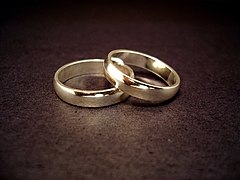Do what a CNBC reporter did: Ask divorce lawyers.
 I’ve mentioned here in the past that estimates of the divorce rate are notoriously difficult to make well. There’s some inherent guesswork involved, unless you just wait for an entire annual cohort of marriages to reach either death or divorce. And that would take a long time. To simply compare a given year’s number of marriages with that year’s number of divorces is to compare different cohorts, making estimates of the divorce rate done that way wildly inaccurate.
I’ve mentioned here in the past that estimates of the divorce rate are notoriously difficult to make well. There’s some inherent guesswork involved, unless you just wait for an entire annual cohort of marriages to reach either death or divorce. And that would take a long time. To simply compare a given year’s number of marriages with that year’s number of divorces is to compare different cohorts, making estimates of the divorce rate done that way wildly inaccurate.
Instead, demographers and social scientists do the best-educated guesswork they can based on past data and current trends. (Government data does not do forward-looking prediction, but rather focuses on divorces that have already occurred.) As new divorce-rate studies are released, you can keep up with them on the Divorce Statistics and Studies Blog. Reasonable people can disagree about the best scientific ways to determine the divorce rate, and there is probably some value to several different approaches. So news reporters, talking to scientists, will sometimes come up with different numbers, and that’s okay. They tend to wind up in that least the same neighborhood. (That neighborhood, by the way, projects the divorce rate for people getting married this year in the low 40s, percentage-wise.)
What is not okay — what shows rather extreme laziness in news reporting — is to ask a scientific question of someone who is in no place to answer it, and then not bother to check the accuracy of their statement. What’s even worse is when that person can directly benefit from providing misinformation.
So it went with CNBC.com in September, when reporter Cindy Perman opened her story about affairs (reprinted by USA Today) by providing an estimate of the divorce rate — a measurable, objective, scientific thing — helpfully volunteered by the director of the American Academy of Matrimonial Lawyers.
The problems with this are so obvious that I’m stunned the article was printed. I don’t even blame the lawyer, at least not any more than I blame spokespeople from the National Association of Realtors for suggesting that any economic news, good or bad, means it’s a great time to buy a home. They’re lying, but that’s their job. I just wish reporters would subject those claims to actual scrutiny.
Like, fact-checking.
I’ll say it here again: The divorce rate in the US probably never got as high as 50%, and is currently declining. The best current estimates of the divorce rate place it in the low 40s, and the divorce rate is much lower for well-educated couples than for less-educated couples.
It’s a topic taken on quite well by Tara Parker-Pope in her book For Better, which dissects the science surrounding a number of elements of marriage and divorce.
Any time you see the lazy and wrong estimate that half of all marriages end in divorce, go ahead and — nicely — say something to correct it. I suppose as a couples therapist I might also benefit from inflating the divorce rate, but I’d rather let facts speak for themselves — and I think effective, widely-available therapy would bring down the divorce rate even further. It would save us all some money, too.
# # #
If you know of egregious repeat offenders with the half-of-all-marriages-end-in-divorce nonsense, email examples to me at ben[at]bencaldwell.com, post a comment below, or send me a link to it on Twitter. Of course, other comments are always welcome.
 Issues of race in the US routinely boil over into violence. Charlottesville is only the latest example. Before that, there was Charleston. And Charlotte. And Ferguson. And Baltimore. After each one, there is a wave of questioning on social media amounting to, “Why aren’t more white people speaking out about this?”
Issues of race in the US routinely boil over into violence. Charlottesville is only the latest example. Before that, there was Charleston. And Charlotte. And Ferguson. And Baltimore. After each one, there is a wave of questioning on social media amounting to, “Why aren’t more white people speaking out about this?” 
 Mental health groups have been
Mental health groups have been ![Photo credit: Gage Skidmore [CC BY-SA 3.0 (http://creativecommons.org/licenses/by-sa/3.0)], via Wikimedia Commons](https://i0.wp.com/www.psychotherapynotes.com/wp-content/uploads/2016/09/Donald_Trump_by_Gage_Skidmore-248x300.jpg?resize=248%2C300) Bill Doherty gave an interview to Minnesota Public Radio last month, cautioning that
Bill Doherty gave an interview to Minnesota Public Radio last month, cautioning that ![By aussiegall from sydney, Australia (30 Days of Gratitude- Day 15) [CC BY 2.0 (http://creativecommons.org/licenses/by/2.0)], via Wikimedia Commons](https://i0.wp.com/www.psychotherapynotes.com/wp-content/uploads/2016/01/512px-30_Days_of_Gratitude-_Day_15_6347253194-300x201.jpg?resize=300%2C201)
